- About Us
- Bearings
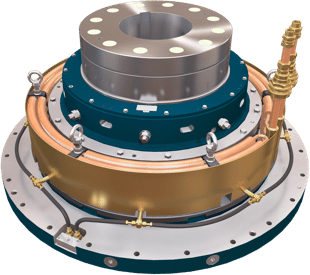 Vertical Bearings
Vertical Bearings
- AV Series
AV
LV SeriesLV
MV SeriesMV
V SeriesV
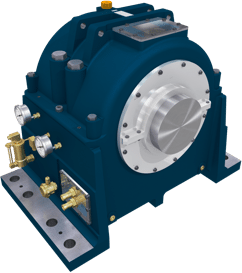 Horizontal Bearings
Horizontal Bearings
- HD Series
HD
IH SeriesIH
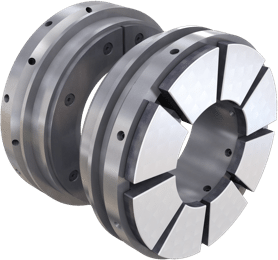 Tilting Pad Bearings
Tilting Pad Bearings
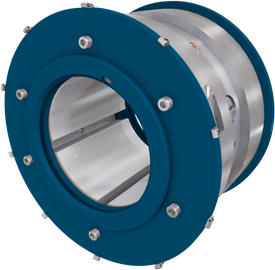 Journal Bearings
Journal Bearings
- Journal Pad Units
Journal
 Thrust Bearings
Thrust Bearings
- SE Series
SE
Omega EqualisedOmega
OmegaOmega
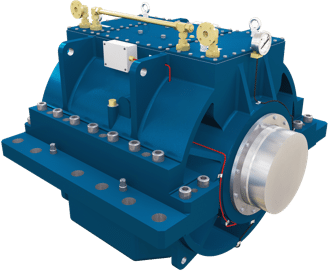 Marine Bearings
Marine Bearings
- Marine Gearbox Internals
Marine
Marine Propulsion Motor
and Generator BearingsEnter your email to download the full paper
"*" indicates required fields
Outline
Home > Like for Like Performance Comparison of PEEK and PTFE Thrust Bearings for use in Vertical Pump and Motor ApplicationsLike for Like Performance Comparison of PEEK and PTFE Thrust Bearings for use in Vertical Pump and Motor Applications
SJ P Bruce, JB Butler and SJ Dixon, Michell Bearings, UK
Over the past two decades polymer lined hydrodynamic bearings have received much publicity and been shown to offer advantages over whitemetal (Babbitt) lined bearings in a number of circumstances. In particular, both PTFE and PEEK have demonstrated their ability to sustain higher loads than whitemetal, which in turn results in more compact designs and therefore lower associated power losses. More recently PEEK has been publicised as having superior material properties to PTFE with the implication therefore that it must yield superior performance. However there has been very little work undertaken to directly compare the like for like performance of the two materials.
This paper details test work performed with sets of 80mm PEEK and PTFE lined thrust pads, both with identical geometry. Each set was tested at a range of duties typically experienced in vertical pump and motor applications, with sliding speeds between 2.5m/s and 21.2m/s, and specific loads up to 7MPa. The results indicate that within the duty ranges tested PEEK pads can experience operating difficulties, whereas PTFE pads are unaffected and continue to perform as expected.
Introduction
Over the past two decades polymer lined hydrodynamic bearings have received much publicity and been shown to offer advantages over whitemetal (Babbitt) lined bearings in a number of circumstances. PTFE (Polytetrafluoroethylene) is now well established in the hydro industry having been developed as a thrust bearing lining material in the 1970’s [1] to overcome persistent hydrogenerator thrust bearing failures in the former Soviet Union. By 1990 the vast majority of hydro-electric power stations in Russia had been fitted with PTFE lined thrust bearings [2]. Since then much work has been undertaken [3, 4, 5, 6, 7] to understand the performance of PTFE thrust pads. Today, the current performance and reliability of PTFE technology is such that many large machines have been designed and built with PTFE faced pads as the first choice.
The advantages of using PTFE linings in large thrust pad applications include:- Higher load carrying capability: Specific loads in excess of 10MPa are cited [6, 7] and certainly Michell Bearings has thrust pads operating in service at 6.3MPa.
- Reduced thermal crowning: PTFE is an insulator, so the thermal gradient through the thickness of the pad is lower, leading to a reduction in distortion and resulting in a flatter operating surface [6, 7].
- Higher starting load capability: Michell Bearings has tested the breakaway capability of PTFE thrust pads under specific loads of 7MPa [8] and supplied bearings for Pelton turbine applications with starting loads of up to 6.2 MPa.
- Durability: PTFE lined thrust pads have proven successful in highly misaligned conditions where whitemetal lined pads have previously failed [5]. In addition, service life of more than 20 years for a single set of pads is reported [8], with the pads undergoing 12-13 start/stops per day.
- Reduced coefficient of friction: PTFE has a much reduced coefficient of friction compared to whitemetal. Tests have shown that PTFE has a breakout coefficient as low as 0.06 compared to 0.18 for whitemetal [8].
- Reduced power loss: Higher load carrying capacity enables a reduction in bearing size to be realised, resulting in power loss savings typically in the order of 20-30% [9]. On several occasions the author’s company has been able to reduce thrust surface areas allowing air cooled rather than water cooled bearings to be used.
In contrast, the development of PEEK (Polyetheretherketone) as a tilting pad lining material for hydro applications originated in Japan in the early 2000’s, but only a few installations have subsequently been reported [10,11]. Other PEEK applications have included special process fluid lubricated bearings and oil lubricated bearings for high speed turbomachinery using small thrust pads [12]. Like PTFE, PEEK has the same claimed advantages when compared to whitemetal, but the material properties of the two polymers have been shown to differ significantly [13, 14]. Compared to PTFE, PEEK exhibits higher strength, stiffness, dimensional stability with temperature and resistance to creep. The implication therefore is that PEEK with its superior material properties must yield superior performance. However, there has been very little work undertaken to directly compare the like for like performance of the two materials in commercially available bearings routinely installed in typical industrial applications.
PTFE thrust pads have been shown to offer advantages over whitemetal not only for large hydrogenerator sized pads, but also for typical reversing vertical pump applications with small (80 mm) thrust pads [15]. In pump applications it is normal to have a requirement for the bearings to sustain short duration reversals unless an anti-rotational backstop is fitted. Hence, unlike the majority of hydro-generators, the bearing thrust pads must be capable of accepting such rotation reversals and, in many cases it is specified that the bearing must be capable of accepting full load during these periods of reverse operation [16].
Although either offset or centre pivot thrust pads can be used for reverse rotations, the advantage of using offset pivot pads in pump applications has long been recognised by leading pump manufacturers. That is the safety and reliability of the thicker and cooler working oil film generated by an offset pivot is utilised during the longer periods of normal forward rotation, with the much shorter durations of reverse rotation (e.g. pump head run-down) being accommodated with acceptance of a slight performance penalty. Whilst it is well established that whitemetal and PTFE lined thrust pads are able to tolerate rotation reversals with offset positioned pivots [5, 6, 8, 15], this is not the case for PEEK lined pads, with no published work known to the authors.
This paper reports the results of a test programme in which PEEK lined 80mm sized offset pivoted thrust pads were tested in forward and reverse rotations. The thrust pads were tested in a mid-range frame size of vertical bearing commonly used in pump and pump motor applications. The test duties replicated those applied to a set of identically sized PTFE lined thrust pads tested previously [15]. The range of test speeds matched those typically experienced in pump applications, but at specific loads significantly higher than those established for whitemetal thrust pads. The results for the PEEK lined pads are compared to those published for the identical PTFE lined pads [15] to determine whether the ‘superior’ properties of PEEK would translate into superior performance.
ACCESS FULL PAPERRecommended articles
Developments in PTFE Faced Thrust Bearings for use in Vertical Pump Applications
Energy Cost Reduction in Tilting Pad Thrust Bearings
PTFE Bearing Technology for Thrust and Journal Applications
PTFE Faced Thrust Bearings: State of the Art Review and Hydro-generator Applications in the UK
Michell Bearings
Waldridge Way,
Simonside East Industrial Park,
South Shields,
NE34 9PZ.Tel: +44 (0) 191 273 0291
Email: sales@michellbearings.com
Email: hrteam@britishengines.com
Email: recruitment@britishengines.com© Michell Bearings.
Registered Office Address: 11 Glasshouse Street, St Peter's, Newcastle upon Tyne. NE6 1BS. Company registered in England and Wales no. 9390648

 PTFE Bearings
PTFE Bearings